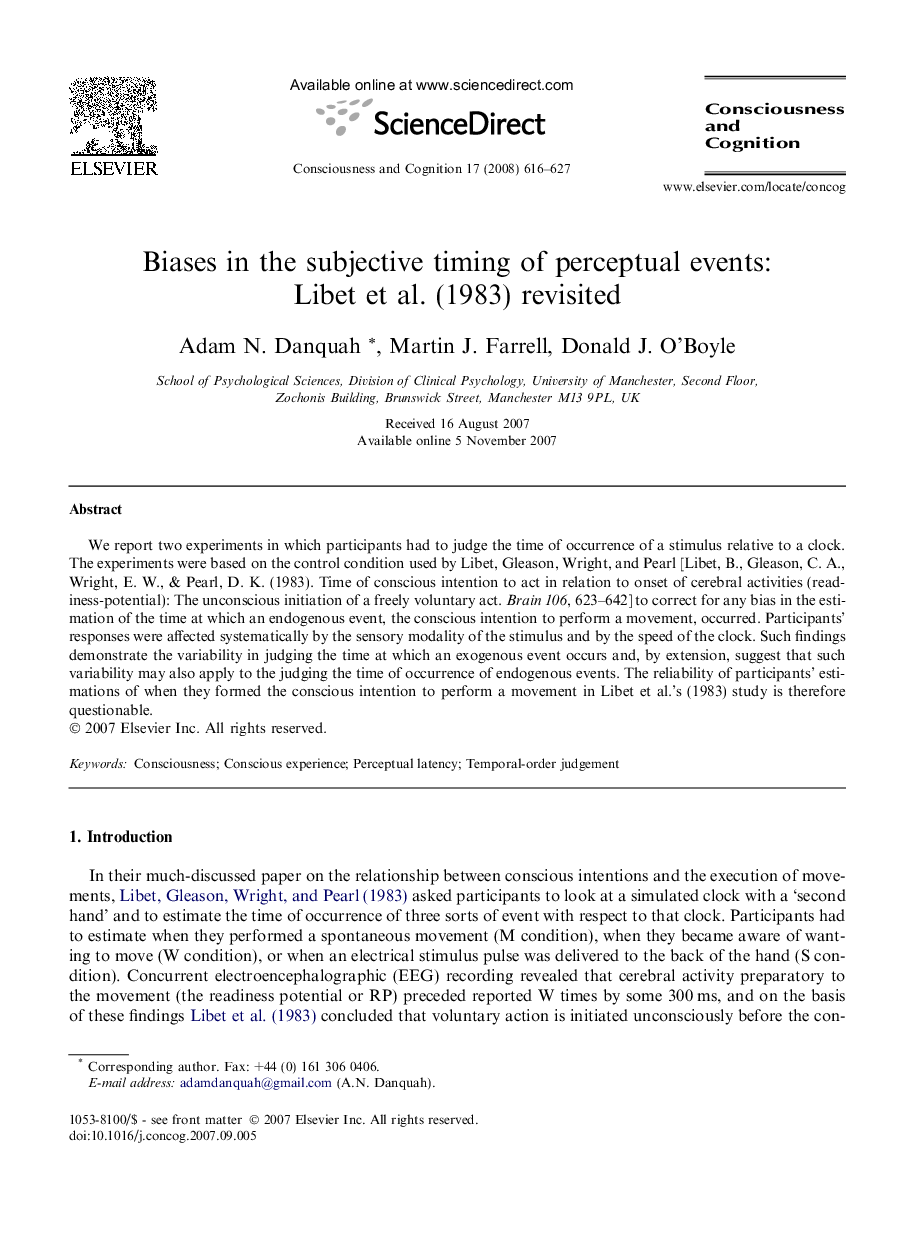| Article ID | Journal | Published Year | Pages | File Type |
|---|---|---|---|---|
| 928042 | Consciousness and Cognition | 2008 | 12 Pages |
We report two experiments in which participants had to judge the time of occurrence of a stimulus relative to a clock. The experiments were based on the control condition used by Libet, Gleason, Wright, and Pearl [Libet, B., Gleason, C. A., Wright, E. W., & Pearl, D. K. (1983). Time of conscious intention to act in relation to onset of cerebral activities (readiness-potential): The unconscious initiation of a freely voluntary act. Brain 106, 623–642] to correct for any bias in the estimation of the time at which an endogenous event, the conscious intention to perform a movement, occurred. Participants’ responses were affected systematically by the sensory modality of the stimulus and by the speed of the clock. Such findings demonstrate the variability in judging the time at which an exogenous event occurs and, by extension, suggest that such variability may also apply to the judging the time of occurrence of endogenous events. The reliability of participants’ estimations of when they formed the conscious intention to perform a movement in Libet et al.’s (1983) study is therefore questionable.
